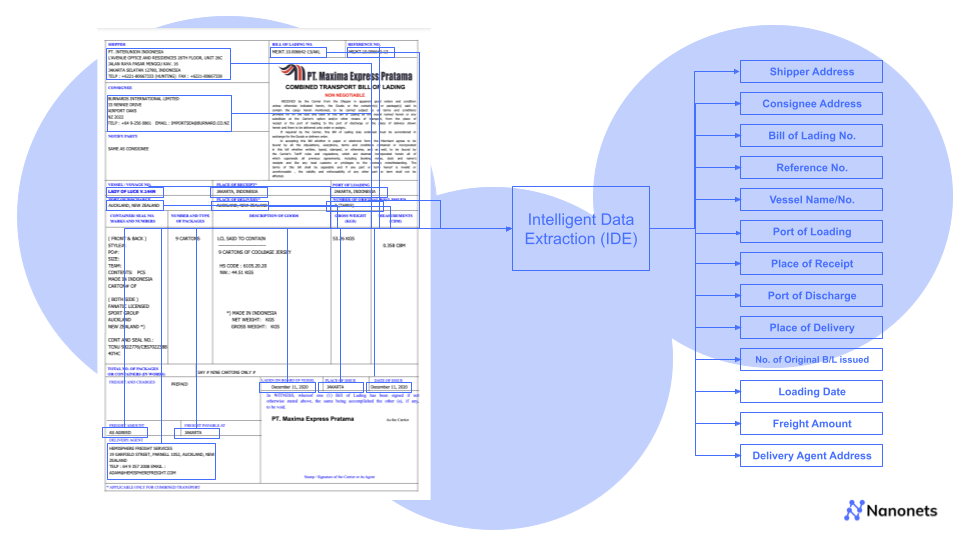
After making waves throughout 2023’s early months, Internet users globally increasingly interact with OpenAI’s ChatGPT platform – whether they know it or not. Startups are increasingly starting ChatGPT-wrapped products and chatbots, and even more companies are recognizing the potential upside of internal ChatGPT use.
And, just like Robinhood and commission-free trading democratized trading and investing, ChatGPT is also capable of democratizing wider financial literacy by making complex topics easily understood and digestible. But that isn’t it – even financial professionals can see plenty of utility in strategic ChatGPT usage by improving sales, optimizing operations, or increasing financial flexibility.
What is ChatGPT? An Overview
Large language models (LLMs) generally, and ChatGPT in particular, use deep wellsprings of training data, content, and information to feed responses to user-generated input. While the processes and mechanisms are a bit more complicated under the hood, ChatGPT responds to prompts by parsing through what it’s “learned” in the past, then generating a string of statistically likely words in sequence. If all works well, the response is built upon a foundation of vetted, verifiable data in a digestible, accessible, and easy-to-understand output.
One of ChatGPT’s particularly unique use cases is through proprietary or otherwise unique training data. Though ChatGPT “base models” are trained on reams of publicly available internet data, users can “feed” close-hold, proprietary information to the LLM to improve its responses within certain segments. For example, if I run a stock analysis and investment website, I can “feed” ChatGPT my past analyses and current stock data and then ask it to report on which measures of success best panned out.
For example, if my articles emphasizing company free cash flow per share metrics were the best indicators of future stock performance, I can narrow my efforts to focus on that aspect of the financial statements. Likewise, if ChatGPT helps determine that the price-to-earnings ratio is less reliable an indicator of performance in my analyses, I can reduce my reliance on the specific ratio.
Other, less niche use cases can include cash flow analysis and optimization, fed by vendor payment documents, forecasting fed by past performance metrics, and more (keep reading for a more exhaustive list!).
Of course, “garbage in, garbage out” applies, and ChatGPT’s responses are only as good as the information it’s referencing. At the same time, ChatGPT and similar LLMs tend not to tell you when they don’t “know” something and simply make it up – a tendency called, aptly, hallucinations.
Any ChatGPT utilization or output should be used as one of many tools, no matter the application, but particularly in finance. Vet, verify, and check ChatGPT responses before using them as part of a financial or operational plan, and you’ll be well on your way to adapting to the rapidly changing financial landscape.
Top 8 Ways to Use ChatGPT for Finance
Before using ChatGPT for financial functions, ensure a handful of up-front requirements are met:
- Make sure your prompts are clear and concise.
- Ensure any data you “feed” the model is authorized for release or that your specific security protocols authorize LLM usage with proprietary data.
- Validate that you or your team have a sufficiently firm understanding of underlying financial principles – if you don’t understand what’s going in, you’ll be less likely to catch bad info coming out.
To that end, these are 8 of the most popular ChatGPT use cases financial teams in a range of roles have explored over the past year and found to be most fruitful.
1. Distilling Financial Reports
SEC filings and financial reports are hundreds of pages long, often with complex legalese and financial jargon throughout. Financial or accounting teams can leverage ChatGPT in various ways to make financial reports clearer, including defining specific terms or summarizing long sections. ChatGPT can accept a range of data input formats, including PDFs and direct URLs, so feeding the LLM this info is simple.
Example prompt: Explain in plain English how convertible notes can impact a company’s capital structure, lending outlook, and affect the share price.
2. Assess Current Investments
Best used for financial advisors, planners, and other professionals (or individual investors), you can feed ChatGPT fund prospectuses, holdings, and other information to analyze your current investments as a whole and optimize your portfolio and strategy. This ChatGPT for financial analysis strategy could prove revolutionary in bringing common-sense investment education to retail investors.
Example prompt: Analyze these three ETF holding reports and tell me which individual stocks have the greatest overlap within the portfolio, ranked by total weight.
3. Model Cash Flow Concerns – ChatGPT for Financial Analysis
By feeding ChatGPT your past cash flow statements and other financial data, as well as vendor-specific payment information, you can use the platform to generate data used in modeling to test variables and optimize your strategy.
Example prompt: Determine the effect a 3% early payment discount has on my annual cash flow, assuming client transactions over $10,000 have a 50% chance of accepting the discount and transactions below $10,000 have a 30% likelihood of discount.
4. Create Financial News Digests
No matter your industry, economic and financial news has a real and immediate impact on your bottom line – but few of us have the time or bandwidth to dedicate to an in-depth, nuanced understanding of all factors driving our economy. You can use ChatGPT to summarize news articles or even generate an end-of-day executive summary using multiple emailed newsletters.
You can even include your specific sector or industry to draw insight you’d otherwise miss, creating a competitive advantage.
Example prompt: Summarize the most salient points from these five weekly economic newsletters with an emphasis on how it may affect my standing as an [INDUSTRY] business owner.
5. Improve Investor Communications
While all direct written communication should come from real, quality writers (if not yourself), you can use ChatGPT to help organize your thoughts and create investor communications that flow well and make sense from an investor standpoint – especially if your clients tend to be less financially fluent than your staff.
Example prompt: My investment fund returned XX% over the past year, we anticipate closing XX deals in the upcoming year, and my macroeconomic concerns include X, Y, and Z. Draft an outline for a quarterly letter to my investors, including these major points of emphasis.
6. Automate the Data
One of ChatGPT’s shining, standout qualities is in helping laypeople generate code for a variety of uses. One of the simplest and most relevant for financial professionals isn’t quite code – but it’s close. ChatGPT can help generate obscure and complex formulas for Excel and similar platforms, improving your efficiency through automation.
Example prompt: I have 100 years of historical return data for the S&P 500, a small-cap index, an international stock index, inflation, and prevailing interest rates. Generate Excel formulas to help determine the correlation between the data sets and identify the years in which the correlation was strongest. Then, draft a sample asset allocation that maximizes theoretical returns throughout the period.
7. Research New Markets or Opportunities
In many ways, ChatGPT is like a search engine on steroids. Instead of searching terms and phrases then digging for an answer, ChatGPT can digest a question in nearly any format or writing style and provide a (fairly) coherent response that’s actionable if properly vetted. This unlocks a world of opportunities to bounce ideas off of or research new opportunities.
Example prompt: I’m a healthcare technology CFO exploring international opportunities. What countries offer the greatest tax advantages to MedTech companies offshoring production?
8. Summarizing Meetings and Calls
We all know hour-long investment updates can make clients’ eyes gloss over, but running a transcript of a quarterly call or all-hands through ChatGPT can be a quick way to determine top takeaways, as well as capture decisions or due-outs.
Example prompt: Generate an executive summary of the highlights of this due diligence call to send to the CFO. Also generate a list of all due-outs from the port-co alongside expected suspense dates and point of contact.
Limitations and Challenges of Using ChatGPT for Finance
Aside from the aforementioned hallucinations and occasionally false output, some other unique challenges do limit ChatGPT’s finance-centric utility for some users:
- There is data latency, and some recent events may not be in the LLM’s training data.
- Proper prompt input does require some finesse that’s hard to quantify if not experienced.
- There’s a risk of data leaks or compromise, especially critical if you’re uploading sensitive or proprietary info.
Conclusion
Though it requires a slight learning curve and willingness to adapt, ChatGPT in finance could serve to increase your efficiency or further professionalize your operation. While it has some drawbacks and isn’t the be-all-end-all that some claim, like any tool ChatGPT has unique use cases, much of its benefit depends on the workman swinging the hammer.




